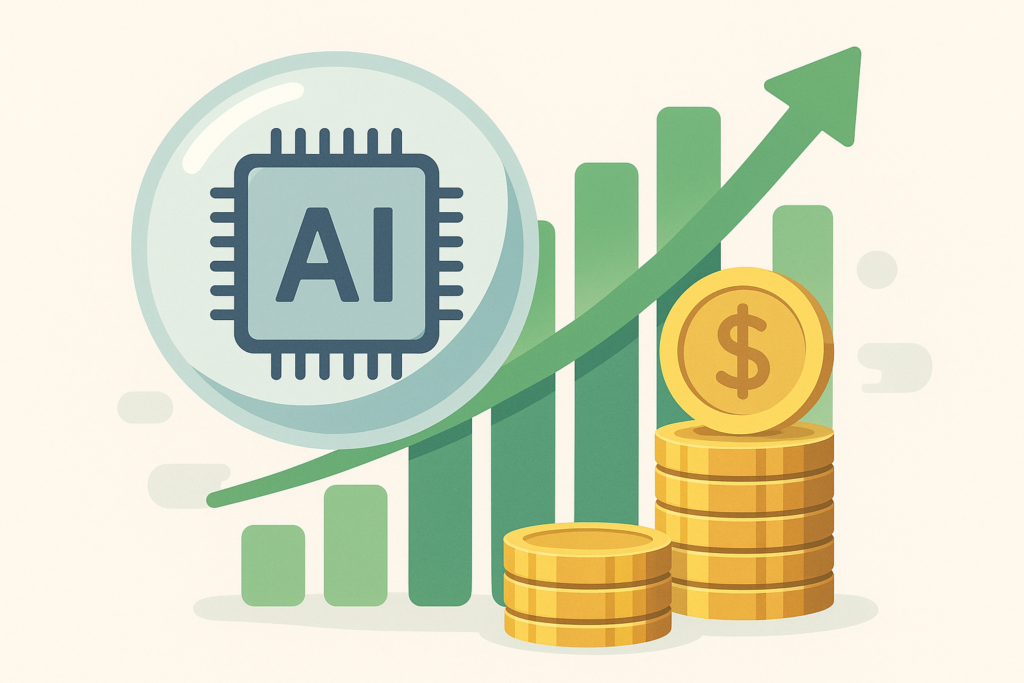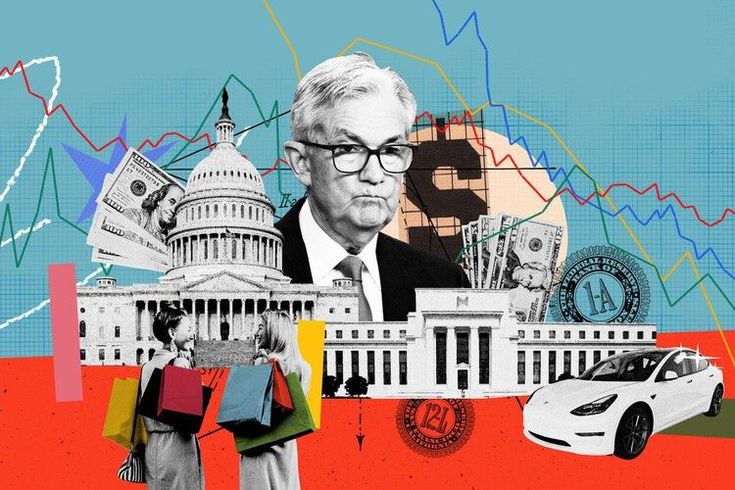AI Investment Analysis
Boom, Bubble, or Something New?
The Trillion-Dollar Question
In the last two years, investment in Artificial Intelligence has exploded, reshaping markets and driving economic growth. Global AI-related spending is projected to reach $1.5 trillion by 2025. This unprecedented surge has sparked a critical debate: are we witnessing a sustainable technological revolution with strong fundamentals, or are we inflating the next great speculative bubble? This interactive report explores the data, compares historical precedents, and analyzes the arguments to help you form your own conclusion.
The Boom in Numbers
The sheer scale of recent AI investment is staggering. Key metrics reveal a sector undergoing exponential growth, driven by massive capital injections into infrastructure and development. This section quantifies the current landscape.
$252.3B
Total Corporate AI Investment in 2024
+44.5%
Private AI Investment Growth (YoY 2024)
8.5x
Increase in GenAI Funding Since 2022
Global Private AI Investment (Billions USD)
Echoes of the Past?
To understand the present, we must look to the past. The dot-com bubble of the late 1990s serves as the primary historical parallel for a technology-driven market frenzy. But how similar is the current AI boom? Use the buttons below to interactively compare key characteristics of the two eras.
Market Index Performance (AI Boom)
Valuation
Market Leaders
Revenue Reality
Adoption
The Great Debate
Experts are deeply divided. One side sees the classic signs of speculative excess, while the other sees a foundational technology shift with real, tangible value. Here are the core arguments from both perspectives.
Warning Signs of a Bubble
- Market Concentration: Gains are dangerously concentrated in a few mega-cap tech stocks. Just 5 AI-related firms make up ~30% of the S&P 500, a concentration exceeding the dot-com peak.
- Decoupling from Fundamentals: Valuations are increasingly based on AI-specific metrics (e.g., model parameters) rather than traditional financial metrics like Price-to-Earnings, a classic bubble trait.
- Debt-Fueled Expansion: The financing of AI infrastructure is shifting from cash flow to massive debt issuance, increasing systemic risk if revenue projections don’t materialize.
- Speculative Frenzy: The rapid rise in valuations and media hype is attracting retail investors, driven by a fear of missing out rather than fundamental analysis.
Arguments for Sustainable Growth
- Real Earnings & Use Cases: Unlike many dot-com companies, today’s AI leaders are profitable giants with enormous cash flows. Tangible improvements in revenue and margins from AI are already being reported.
- Widespread Adoption: AI is not a future promise; it’s already integrated. 78% of organizations reported using AI in 2024, indicating real utility and demand that builds a solid foundation.
- More Reasonable Valuations: While high, current market valuations (P/E ratios) are roughly half the extreme levels seen at the peak of the dot-com bubble.
- Foundational Infrastructure: The investment is building tangible, long-term infrastructure (data centers, chipsets) that will power the economy for decades, much like the railways of the 19th century.
Key Risk Factors on the Horizon
Beyond the bubble debate, several tangible challenges could derail the AI boom. These factors represent the most significant headwinds that could impact profitability and temper future growth, regardless of market sentiment.
⚡ Power & Physical Constraints
The energy demand for AI data centers is immense. Power grid availability is becoming a primary bottleneck for expansion, introducing new risks around infrastructure costs and the physical feasibility of continued growth at the current pace.
📉 The Profitability Gap
The cost of building and running AI models is enormous. Estimates suggest the industry faces an $800 billion deficit between infrastructure costs and potential revenue. If AI fails to generate sufficient returns to cover these costs, the entire financial model is at risk.
💸 Debt & Capital Costs
As companies turn to borrowing to fund AI expansion, they become more vulnerable to interest rate changes and shifts in credit markets. A debt-fueled arms race could lead to overbuilding and stranded assets if demand falters.
Expert Outlook & Conclusion
While opinions vary, a consensus is emerging that while the AI market contains ‘bubbly’ elements and faces real risks, it is fundamentally different from the dot-com bust. The transformative potential is real, but so is the potential for a significant market correction.
“We estimate the sector is in its 1996 moment during the internet boom, absolutely not its 1999 before that bubble burst. Many dollars will go up in smoke, and there will be many losers… but the technology will remain.” – Dan Ives, Wedbush Securities
The key takeaway for investors and observers is one of cautious optimism. The current AI boom is built on a more solid foundation of real revenue and widespread adoption than previous tech bubbles. However, the immense valuations, market concentration, and significant profitability risks cannot be ignored. A correction is possible, even likely, but a full-scale collapse on the scale of the dot-com bust is less probable. The future will likely see a separation of truly valuable AI applications from the hype, rewarding companies that can demonstrate tangible, long-term profitability.
1. Introduction: The Pop That Echoed Through Time
History is filled with moments of intense market optimism, where investors flock to a new idea or technology, convinced it will change the world. Sometimes they are right, but often this excitement spirals into a financial bubble—a cycle of soaring prices driven by hype, only to be followed by a sudden and dramatic collapse. While the assets change, the script of human behavior remains remarkably consistent. The dot-com bubble offers a modern, high-speed replay of this timeless drama, making it an ideal classroom for understanding market psychology.
This article will explain exactly what a financial bubble is, how one forms, and what happens when it inevitably bursts. To bring these concepts to life, we will use one of the most famous examples in modern history as our guide: the dot-com bubble of the late 1990s. By deconstructing its rise and fall, we can clearly see the core mechanics that drive these remarkable economic events.
2. The Anatomy of a Bubble: More Than Just Rising Prices
A financial bubble is more than just a period of rising prices; it is a complex cycle where market behavior becomes detached from reality, driven by powerful psychological forces.
2.1. Defining a Bubble
A financial bubble occurs when the price of an asset, such as a company’s stock, skyrockets to a level that far exceeds its intrinsic value—the value justified by its underlying financial health and long-term fundamentals. This rapid inflation of prices is always followed by a swift and sharp contraction, an event commonly known as a “crash” or “burst.”
2.2. The Psychology of Hype
A bubble is not a failure of spreadsheets, but a triumph of human psychology. Three emotional forces consistently conspire to inflate asset prices to unsustainable levels:
• Irrational Exuberance & FOMO: Coined by former U.S. Federal Reserve Chairman Alan Greenspan, “irrational exuberance” describes a state of extreme market optimism where investors believe prices will only go up. This is amplified by the “fear of missing out” (FOMO), a powerful emotion that compels people to invest simply because they see others making huge profits and don’t want to be left behind.
• Herd Mentality: This is the tendency for individuals to follow the actions of a larger group, often ignoring their own analysis or judgment. When everyone seems to be buying into a particular asset, it creates social pressure to join in, which pushes prices even higher.
• The “This Time Is Different” Narrative: During a bubble, a compelling story almost always emerges that claims the old rules of valuation no longer apply. Investors are told that a new technology or economic shift has created a paradigm where traditional metrics are obsolete, justifying ever-higher prices.
2.3. The Five Stages of a Bubble
Economist Hyman Minsky developed a famous model that breaks down the lifecycle of a typical bubble into five distinct stages. This framework helps provide a clear narrative for how market manias evolve from a promising new idea into a full-blown panic.
1. Displacement: A new technology, a major policy change, or another significant event captures investor attention and creates new, often poorly understood, opportunities for profit.
2. Boom: As media hype builds and early investors reap large rewards, a wider wave of less sophisticated retail investors is drawn in, and prices begin a sustained climb. This is where herd mentality begins to take over, as rising prices create a powerful social proof that draws in new investors.
3. Euphoria: At the peak of the bubble, caution is thrown to the wind, and asset prices become completely detached from their fundamental value. This stage is the apex of irrational exuberance, where the “this time is different” narrative is universally accepted and the fear of missing out (FOMO) becomes the dominant driver of investment decisions.
4. Profit-taking: Sensing that the peak is near, astute institutional investors and insiders quietly begin to sell their positions to lock in their gains.
5. Panic: A trigger—such as a major company failure or a shift in policy—causes market sentiment to reverse suddenly. The herd mentality that drove prices up now works in reverse, creating a stampede for the exits and a catastrophic collapse in prices.
Understanding this theoretical framework allows us to see how different bubbles can form around different types of assets, leading to very different consequences.
3. Two Sides of the Same Coin: Equity vs. Debt Bubbles
While all bubbles are fueled by speculation, the nature of the underlying asset determines whether the aftermath is a painful sector-specific hangover or a catastrophic systemic heart attack. The key difference lies in what is being speculated on—company ownership (equity) or borrowed money (debt).
| Feature | Equity Bubble (e.g., Dot-Com Crash) | Debt Bubble (e.g., 2008 Housing Crisis) |
| Primary Fuel | Investment in a real, often transformative, innovation where confidence eventually detaches from reality. | Credit-based lending, often for assets with little intrinsic backing, amplified by financial engineering. |
| Core Asset Type | Company stocks representing ownership in new technologies. | Mortgages bundled into complex financial securities (MBS, CDOs). |
| Consequence of Burst | Sectoral consolidation and reallocation of capital; leftover physical infrastructure often remains. | Systemic financial collapse, credit market freeze, and widespread economic contagion. |
Now, let’s examine the dot-com crash as a perfect real-world example of an equity bubble in action.
4. Case Study: The Rise and Spectacular Fall of the Dot-Coms
To see this five-act drama play out on the world stage, we need only look to the dot-com bubble of the late 1990s—a textbook case of an equity bubble built on a world-changing technology.
4.1. The Spark: A “New Economy” is Born
The displacement event that kicked off the bubble was the emergence of the World Wide Web into the mainstream. This sparked a powerful narrative that the internet had created a “new economy” where the traditional rules of business and valuation no longer applied. Investors were captivated by the idea of a commercial frontier with limitless potential.
4.2. The Hype: From “Eyeballs” to Euphoria
The boom gave way to euphoria as investor focus shifted away from concrete fundamentals like revenue and profitability. Instead, they embraced speculative new metrics to justify sky-high valuations, such as website “traffic,” “eyeballs” (the number of viewers), and user growth. This frenzy was fueled by a perfect storm of cheap capital from low interest rates, an abundance of venture capital, and a relentless media frenzy that created a powerful sense of FOMO. A rush to invest in any company with a “.com” in its name took hold. Most of these companies were pre-revenue, lacked viable business models, and burned through their capital on lavish marketing campaigns rather than building sustainable operations.
4.3. The Crash: A $5 Trillion Correction
The peak in March 2000 marked the beginning of the profit-taking and panic stages. As investors realized that most dot-com companies were burning through cash with no path to profitability, the technology-heavy NASDAQ Composite index, which had been the epicenter of the boom, plummeted. By October 2002, the index had fallen by nearly 77%, wiping out an estimated $5 trillion in investor value.
4.4. The Legacy: What Was Left Behind
The aftermath was devastating for most dot-com companies, the vast majority of which went bankrupt. However, because this was an equity bubble built around a real innovation, the story didn’t end there.
• Strong Survivors: Companies with sound business plans, like Amazon and eBay, survived the crash and went on to become global titans.
• Valuable Infrastructure: Crucially, the physical infrastructure built during the boom—vast networks of fiber-optic cable—remained. This infrastructure significantly lowered the cost of data transmission and paving the way for the next generation of digital innovation, including social media and streaming services.
This outcome demonstrates the most important lesson from an equity bubble’s collapse: even when the speculative mania fades, the underlying technological foundation can endure and fuel future growth.
5. Conclusion: Lessons from the Bubble
The dot-com bubble provides a timeless and invaluable lesson in market dynamics and human psychology. By studying its lifecycle, we can distill a few core truths that are essential for any aspiring student of economics or finance to understand.
Here are the three most important takeaways:
• A bubble is a psychological cycle where asset prices detach from reality before crashing. It is not just about rising prices but about a collective belief system that becomes untethered from fundamental value.
• Human emotions like FOMO and herd mentality are the primary fuel for speculative bubbles. The desire to join the crowd and the fear of being left out can overwhelm rational analysis, creating a self-reinforcing cycle of rising prices.
• The dot-com crash shows how even when a bubble bursts, a truly transformative technology can leave behind valuable infrastructure for the future. While the financial speculation was destructive, the investment it spurred created a foundation that enabled decades of subsequent innovation.
History does not repeat, but it often rhymes. The echoes of the dot-com crash can be heard in every new technological boom, reminding us that the line between visionary investment and speculative mania is eternally thin.
AI Investment Snapshot (2013–2025)
| Metric | 2023 | 2024 | 2025 (YTD / Est.) | Notes |
|---|---|---|---|---|
| Global AI corporate investment | ~$200B | $252B | $280B est. | 13× growth since 2014. |
| Global AI venture funding | $55.6B | >$100B | $73.1B in Q1 alone | 1/3 of global VC went into AI in 2024. |
| Generative AI investment | ~$28.6B | $33.9B | N/A | 8× jump since 2022. |
| AI unicorns (>$1B) | 22 new (2023) | 36 new; total 245 | ~498 by mid-2025 | Valued around $2.7T. |
| OpenAI valuation | ~$86B | $157B | $500B | Massive jump in 2025. |
| Nvidia market cap | $1.2T | ~$3T | >$4T | Briefly world’s most valuable company. |
| Anthropic valuation | $60B (Mar) | $170B (Sep) | — | Nearly 3× in 6 months. |
| Big Tech AI CapEx (MSFT, GOOG, AMZN, META) | — | $230B | $320B | Driving infrastructure build-out. |
Historical Comparison of Bubbles
| Feature | Dot-com Bubble (1995–2001) | Housing Bubble (2002–08) | Current AI Market |
|---|---|---|---|
| Driver | Internet / “New Economy” | Easy credit, securitization | Generative AI breakthroughs |
| Valuation Metric | “Eyeballs,” traffic | Housing prices “always rise” | Non-traditional metrics, extreme P/Es |
| Market Psychology | FOMO, media frenzy | Speculative buying | “AI washing,” hype, FOMO |
| Capital Source | VC, IPOs, retail | Mortgages, shadow banking | Big Tech CVC, sovereign funds |
| Nature | Equity bubble | Debt bubble | Equity-driven, but systemic risk concentrated |
AI Productivity & Real-World Gains
| Sector / Company | AI Application | Quantifiable Outcome |
|---|---|---|
| JPMorgan Chase | Contract AI (COiN) | Cut 360,000 legal hours to seconds. |
| Toyota | Factory ML models | Saved 10,000+ man-hours yearly. |
| Meta | Ops efficiency | 201% net income increase. |
| Deloitte | Care Finder AI | Reduced call time from 5–8 min to <1 min. |
| Allegis Group | Recruitment AI | Major recruiter efficiency gains. |
| U.S. Workforce | Generative AI | 5.4% avg. work hours saved. |



